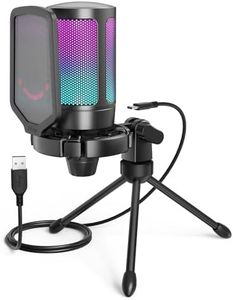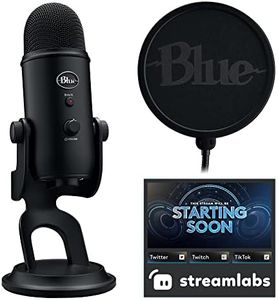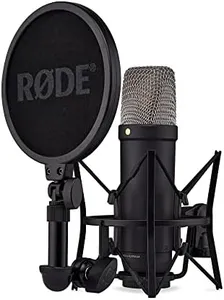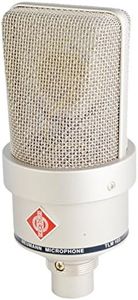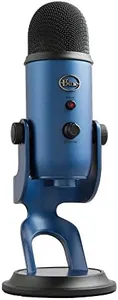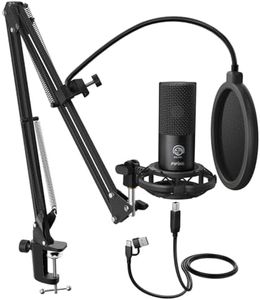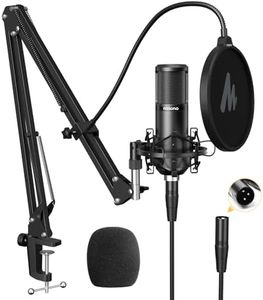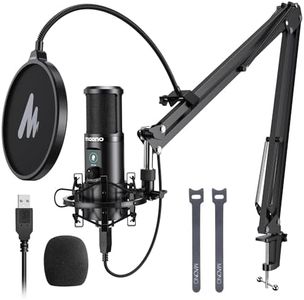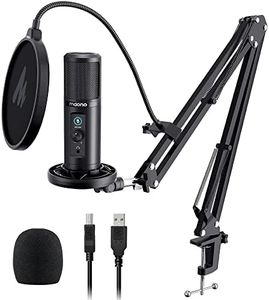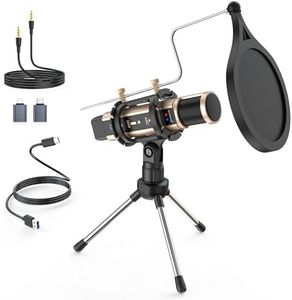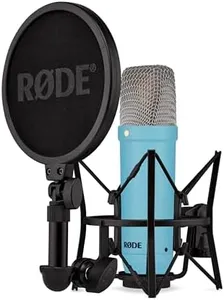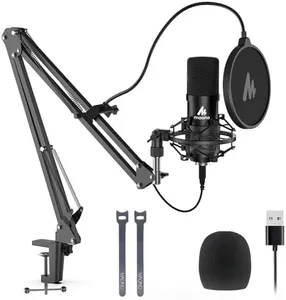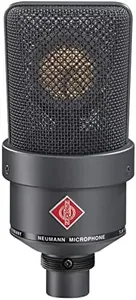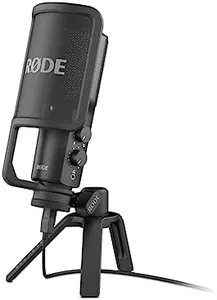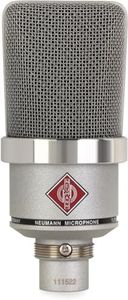10 Best Condenser Microphones For Vocals 2025 in the United States
Our technology thoroughly searches through the online shopping world, reviewing hundreds of sites. We then process and analyze this information, updating in real-time to bring you the latest top-rated products. This way, you always get the best and most current options available.

Our Top Picks
Winner
Blue Yeti Streaming Micophone Kit with Microphone for PC/Mac/PS4/PS5
The Logitech for Creators Vocal Condenser Microphone, branded as the Blue Yeti Game Streaming Kit, is a strong choice if you're looking for a USB condenser mic mainly for streaming, podcasting, or vocal recording. It uses a unidirectional polar pattern, which means it focuses on sound coming from one direction—ideal for reducing background noise when recording your voice. The frequency response supports clear and natural sound for vocals. Connectivity is straightforward with USB Type-A, so it easily plugs into most PCs without extra equipment.
One of the microphone's biggest pluses is its built-in noise reduction feature and a signal-to-noise ratio of 80 dB, helping your voice come through clearly without much hiss or static. It also includes fun voice modulation effects, which can be entertaining for streamers or podcasters wanting to vary their sound. The pop filter that comes with the kit helps reduce popping sounds from hard consonants, which is great for clean vocal recordings.
The microphone is relatively heavy (around 4.5 pounds) and made of polycarbonate, so it might feel less premium or slightly bulky compared to some metal-bodied mics. The unidirectional pattern, while great for isolating vocals, is less flexible than mics offering multiple patterns (like cardioid, omnidirectional, bidirectional), which might limit its use in group recordings or different setups. This Logitech Blue Yeti kit is a solid pick for simple plug-and-play solo vocal streams and podcasts with added fun voice effects, though those needing more versatile options for professional studio work or louder sources may want to consider other models with multiple polar patterns.
RØDE NT1 5th Generation Large-diaphragm Studio Condenser Microphone with XLR and USB Outputs, Shock Mount and Pop Filter for Music Production, Vocal Recording and Podcasting (Black)
Most important from
6284 reviews
The RØDE NT1 5th Generation condenser microphone is a strong contender in the vocal recording space, perfect for both home studios and professional setups. Its frequency response and unidirectional polar pattern ensure that it captures vocals with impressive clarity while minimizing background noise. One of its standout features is the ultra-low self-noise level of just 4 dB, making it ideal for detailed recordings where subtle nuances matter. The high SPL handling capability allows it to capture loud sounds without distortion, which is a plus for musicians working with diverse instruments.
Connectivity is a breeze with dual options—XLR for traditional setups and USB for direct connection to computers. This versatility makes it user-friendly for beginners and seasoned pros alike. Additionally, the inclusion of a shock mount and pop filter adds value by reducing unwanted vibrations and plosive sounds during recordings.
It's worth noting that while the microphone excels in many areas, it might not be the best choice for those seeking a highly portable solution. Its larger size and the need for a stable setup could be a drawback for mobile recording needs. Furthermore, while the price reflects its quality, budget-conscious users might find it slightly on the higher end compared to other entry-level options. The RØDE NT1 5th Generation is an excellent investment for vocalists, podcasters, and music producers looking for high-quality sound. Its strengths lie in sound clarity, low noise, and versatile connectivity, though its size and price may be considerations for some users.
Most important from
6284 reviews
Neumann TLM 103 Large-Diaphragm Condenser Microphone - Nickel
The Neumann TLM 103 Condenser Microphone is a well-regarded choice for vocal recording, boasting a frequency response range of 20Hz-20kHz. This wide range ensures that it captures both the low and high ends of the vocal spectrum clearly, making it suitable for a variety of vocal styles. Its unidirectional (cardioid) polar pattern is excellent for isolating the sound source and minimizing background noise, which is crucial in both professional and home studio settings. The microphone is known for its high sensitivity, allowing it to pick up even the subtlest nuances in a vocal performance. Additionally, it features extremely low self-noise, meaning it introduces minimal interference, which is ideal for getting clean recordings without unwanted hiss or hum.
The max SPL capability of the TLM 103 ensures it can handle loud vocal performances without distortion, making it versatile for different vocal dynamics. Connectivity is straightforward with an XLR connector, widely used in audio recording setups, ensuring compatibility with most recording interfaces and mixers. One drawback is that this microphone requires an external power source (phantom power), which is standard for condenser mics but something to keep in mind if your setup doesn't already include it.
The included wooden jeweler's box is a nice touch for storage and transport, though some might find it less practical than a hard case. The TLM 103 is slightly more expensive than some other condenser microphones, but its high-quality build and exceptional audio performance justify the investment for serious vocal recording enthusiasts.
